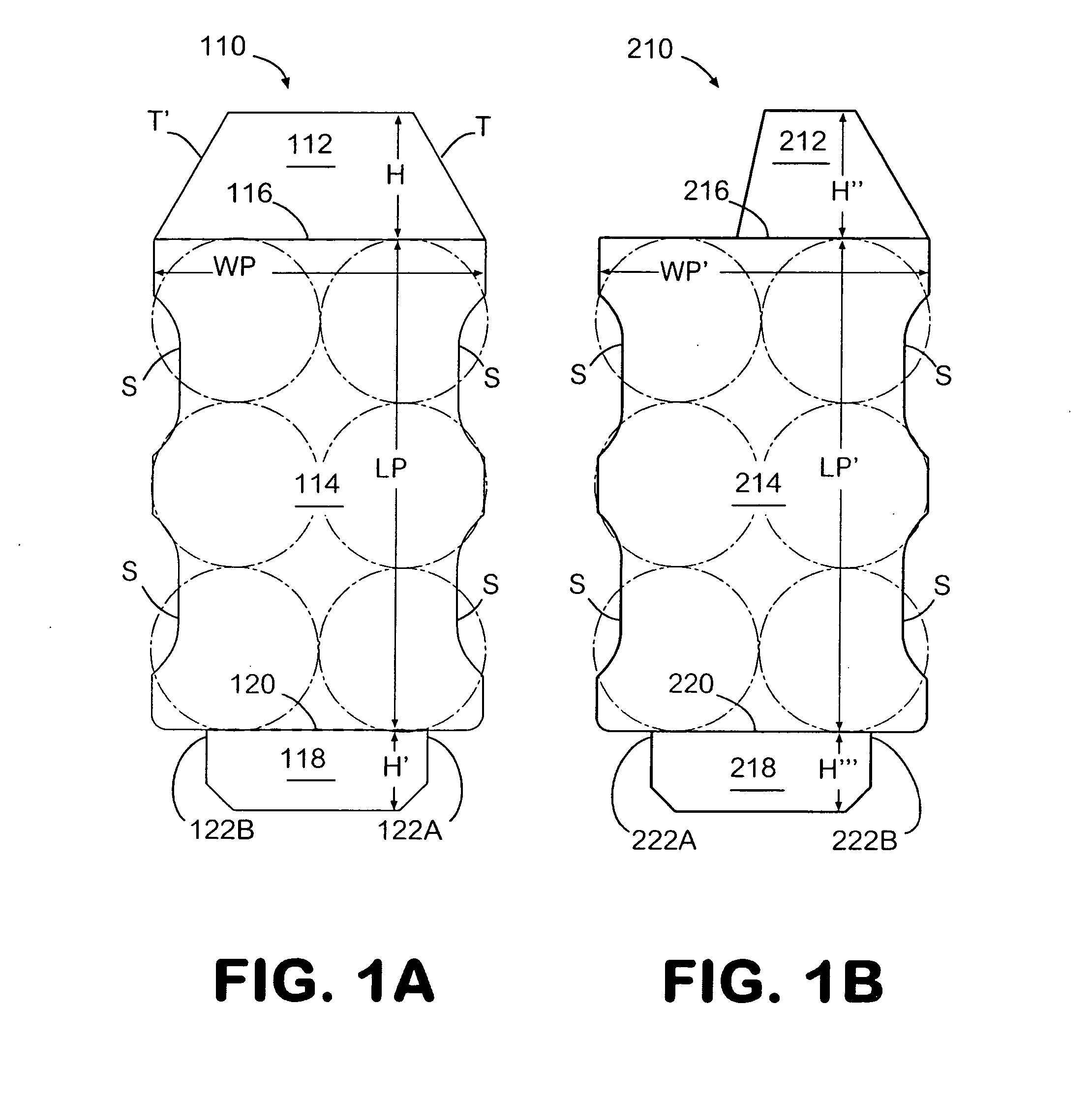Carton with an interlocking divider pad
a technology of divider pads and cartons, applied in the field of cartons, can solve the problems of difficult removal of cans immediately adjacent to this end of the carton
- Summary
- Abstract
- Description
- Claims
- Application Information
AI Technical Summary
Benefits of technology
Problems solved by technology
Method used
Image
Examples
Embodiment Construction
[0026] The present invention is primarily for use with cans of the type used to contain meat products, vegetables and fish. The carton of this invention is primarily useful for cans that are stacked in the carton in two layers with two of more rows in each layer. These cans typically only have a height of two or three inches, and typically these cans are stacked in a carton in two layers of six cans in each layer.
[0027] As illustrated in FIG. 1, the blank 10 for forming the carton of this invention is formed from a foldable sheet of material, such as paperboard. The blanks 110 and 210 for forming the interlocking separator pad is also formed from a foldable sheet of material, such as paperboard, as illustrated in FIGS. 1A and 1B.
[0028] The blank 10 for forming the carton of this invention has a glue flap 12 which is attached to bottom panel 14 by fold line 16 and interconnected to side panel 18 by fold line 20. Side panel 18 is connected to top panel 22 by fold line 24, and interc...
PUM
| Property | Measurement | Unit |
|---|---|---|
| height | aaaaa | aaaaa |
| sizes | aaaaa | aaaaa |
| distance | aaaaa | aaaaa |
Abstract
Description
Claims
Application Information
 Login to View More
Login to View More - R&D
- Intellectual Property
- Life Sciences
- Materials
- Tech Scout
- Unparalleled Data Quality
- Higher Quality Content
- 60% Fewer Hallucinations
Browse by: Latest US Patents, China's latest patents, Technical Efficacy Thesaurus, Application Domain, Technology Topic, Popular Technical Reports.
© 2025 PatSnap. All rights reserved.Legal|Privacy policy|Modern Slavery Act Transparency Statement|Sitemap|About US| Contact US: help@patsnap.com



